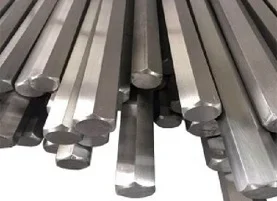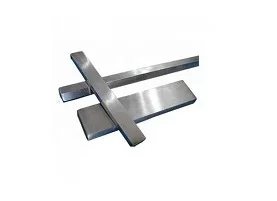Stainless steel hexagon bars are widely used in various industries due to their unique properties and versatility. These bars are known for their strength, corrosion resistance, and aesthetic appeal. In this article, we will delve into the properties of stainless steel hexagon bars, exploring their composition, characteristics, and applications.
Composition and Manufacturing
Stainless steel hexagon bars are primarily made from a family of iron-chromium alloys known as stainless steels. The composition of stainless steel can vary, but it typically contains a minimum of 10.5% chromium, which forms a passive oxide layer on the surface, providing excellent corrosion resistance. Other elements commonly present in stainless steel include nickel, molybdenum, and manganese, which contribute to its mechanical properties.
The manufacturing process of stainless steel hexagon bars involves several steps. Initially, raw materials, such as iron ore, chromium, and other alloying elements, are melted in an electric arc furnace. The resulting molten metal is then refined and cast into molds to form stainless steel billets. These billets are further processed through hot rolling, cold drawing, or extrusion to produce hexagon bars with the desired dimensions.

Properties of Stainless Steel Hexagon Bars
Corrosion Resistance
One of the key properties of stainless steel hexagon bars is their exceptional corrosion resistance. The high chromium content in stainless steel forms a thin, invisible, and self-healing oxide layer on the surface when exposed to oxygen. This oxide layer acts as a protective barrier, preventing the underlying metal from coming into direct contact with corrosive substances. As a result, stainless steel hexagon bars exhibit excellent resistance to rust, stains, and corrosion in various environments, including moisture, chemicals, and high temperatures.
Strength and Durability
Stainless steel hexagon bars possess impressive mechanical properties, including high strength and durability. The alloying elements, such as nickel and molybdenum, contribute to the strength and toughness of stainless steel. This makes hexagon bars suitable for applications that require structural integrity and resistance to deformation under heavy loads or extreme conditions.
Heat and Fire Resistance
Another notable property of stainless steel hexagon bars is their resistance to high temperatures and fire. Stainless steel has a high melting point and can withstand prolonged exposure to elevated temperatures without significant deformation or structural weakening. It retains its strength and shape even at extreme heat, making it ideal for applications in industries such as aerospace, automotive, and construction, where fire resistance is crucial.
Aesthetic Appeal
In addition to their mechanical properties, stainless steel hexagon bars are valued for their aesthetic appeal. Stainless steel has a smooth, reflective surface that lends a modern and sophisticated look to architectural and decorative applications. It is often used in the construction of handrails, furniture, kitchen appliances, and signage, where both functionality and visual appeal are important.

Applications of Stainless Steel Hexagon Bars
Stainless steel hexagon bars find extensive use across various industries and applications due to their exceptional properties. Some common applications include:
Manufacturing and Engineering: Stainless steel hexagon bars are widely used in the manufacturing and engineering sectors for the production of machine components, fasteners, valves, and fittings. Their strength, corrosion resistance, and ease of fabrication make them suitable for demanding industrial environments.
Construction and Architecture: Stainless steel hexagon bars are utilized in the construction industry for structural elements, handrails, balustrades, and decorative features. The combination of strength, corrosion resistance, and aesthetic appeal makes stainless steel an ideal choice for both indoor and outdoor applications.
Food and Beverage Industry: Stainless steel hexagon bars are extensively used in the food and beverage industry due to their hygienic properties and resistance to corrosion caused by food acids and liquids. They are employed in the production of food processing equipment, storage tanks, and brewing systems.
Marine and Offshore Applications: Stainless steel hexagon bars are highly sought after in marine and offshore industries due to their ability to withstand the corrosive effects of saltwater and harsh weather conditions. They are used in the construction of ship fittings, rigging, and marine structures.

Conclusion
Stainless steel hexagon bars are versatile materials that offer a combination of strength, corrosion resistance, heat resistance, and aesthetic appeal. These properties make them indispensable across numerous industries, ranging from construction and engineering to food and beverage. Understanding the composition and properties of stainless steel hexagon bars allows for informed material selection and ensures optimal performance in various applications.
Whether it's for structural, decorative, or functional purposes, stainless steel hexagon bars continue to be a reliable choice for industries seeking durability, longevity, and resistance to corrosion.
Recommended reading
